The Motorola Droid RAZR HD and Droid RAZR
MAXX HD are Android-based, 4G LTE-capable smartphones designed by Motorola as
the successor to the Droid Razr series. Notable changes from their predecessors
include 720p resolution displays and increased display size while maintaining
similar overall dimensions. Additionally, the battery capacity on the standard
RAZR HD improved 42% from its predecessor. These smartphones were released on
October 18, 2012 exclusively on Verizon Wireless in the US.
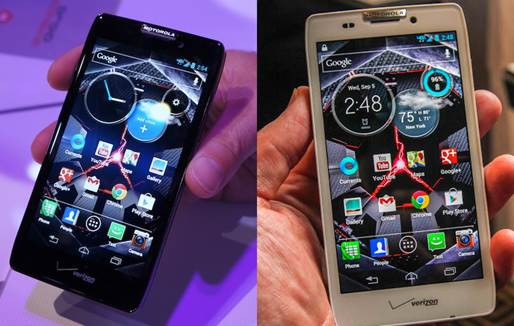
RAZR
MAXX HD (left) and RAZR HD (right)
When Motorola restored the RAZR brand in
2012, we did not realize that we were looking at the new face of the company.
At that time, Google had not officially taken over this mobile phone manufacturer
yet, it had many unimpressive devices and while it was a modest success, the
Droid RAZR did not exactly turn the market on its head. However, in retrospect,
it is quite reasonable when RAZR becomes the standard-bearer for Motorola.
Despite the fact that we were not impressed by 2012’s model, it was a big step
in the right direction for the company, a device that featured a great mix of
premium styling and performance. The new RAZR HD and MAXX HD take that basic attempt
to address our concerns about the display and battery life, the latter of which
was already handled in dramatic fashion by the RAZR MAXX. So, how do the latest
caps-happy, vowel-averse handsets from Motorola stack up against 2012’s
incarnations and the current crop of competitors? Keep on reading to find it
out.
Hardware
More than anything else, the RAZR line is
all about design and hardware – the HD series is no different. The entire backs
of the two devices are wrapped in Kevlar, with a distinctive herringbone-like
pattern of black and gray rectangles that give the rear of the phones a very
smooth, seamless feel. Holding it naturally, that surface is only interrupted
by the small Motorola logo inserted in the middle of the device. Above that are
the speaker and the 8-megapixel camera. Finally, the Droid RAZR HD sees
Motorola bid the camera hump adieu. The design flourish made its most
high-profile appearance in the Droid X and made a return in devices like the
Atrix HD and original Droid RAZR. There is still a slight taper to the body,
but no obvious bulge to house the sensor. At 8.4mm thin, it is quite a slender
device. It may not get down to the nearly anorexic 7.1mm of the Droid RAZR but
that additional volume is put to good use by the 2,500mAh battery which, as
we’ll see later, stomps all over its predecessor. The MAXX HD is a bit thicker
at 9.33mm and has no taper, which allows it to fit a stunning 3,300mAh
powerpack inside. Larger battery and increased storage (32GB vs 16 GB) are what
distinguishes between the $199 RAZR HD and the $299 RAZR MAXX HD. Otherwise,
they’re the same phone.
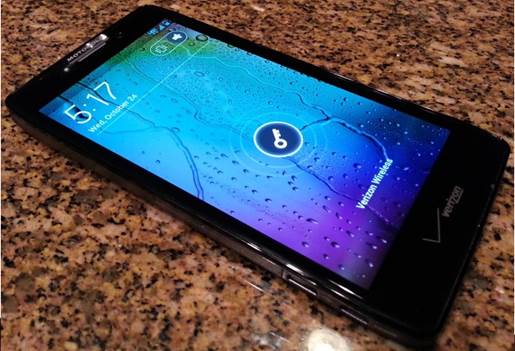
The
RAZR HD is quite slender at 8.4mm thin
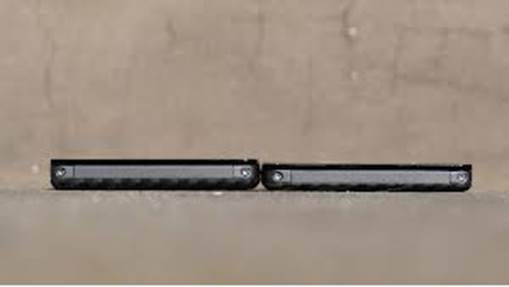
The
RAZR MAXX HD (left) is thicker (at 9.33mm) than the RAZR HD (right)
The slightly body leaves space for a nice
strip of aluminum around the edges and allows Motorola to spread out the
various ports and buttons. The top houses only the headphone jack, a drastic
change from the original Droid RAZR, which also found room there for the HDMI
and micro USB ports.
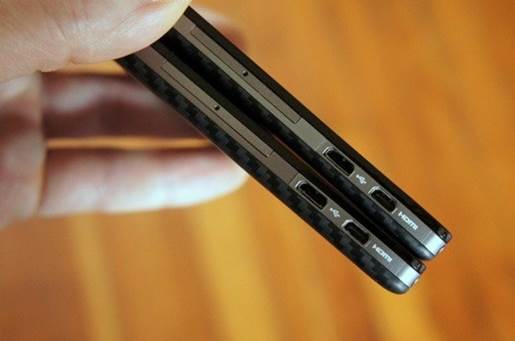
HDMI
and micro USB ports are moved to the left-hand side, towards the bottom
Instead, it is moved to the left-hand side
of the handset, towards the bottom of the body, below the hidden tray for the
micro SIM and micro SD cards. On the right side, there are a Power button and a
Volume rocker, which are textured very nice and depress with a satisfying
amount of feedback. At the front, you’ll find the necessary sensors and an HD
camera for Video chats and self-portraits. Sandwiched between the earpiece and
Motorola logo is a long, thin notification LED that underlines the company
name.
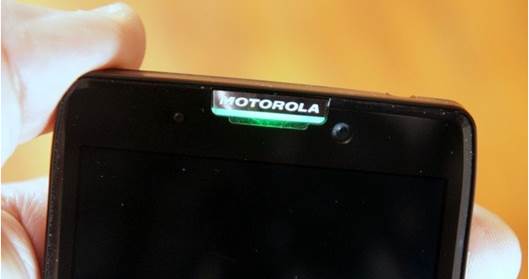
Up
front, there’re sensors and an HD camera; sandwiched between the earpiece and
Motorola logo is a LED
Combine all with an edge-to-edge Gorilla
Glass on the surface and you have got a rather solid and senior-feeling device.
Actually, the word that we’d like to use to describe it is “dense” – like a
brick. It has the same size and weight as the Galaxy Nexus but, subjectively,
it feels a bit heavier when you hold both at the same time. It is about 1mm thinner
than the Nexus but as its straight sides and almost featureless body, it feels
a bit more inconvenient in the hand. Despite being narrower than the Galaxy S
III and One X, the RAZR HD and MAXX HD seem a little too big. It’s such a shame
because we love the heft and stunning build quality. From a construction and
material selection point of view, the RAZR line belongs in the same class with
One series of HTC and iPhone. But, as time gone by, the small inconveniences of
the design became increasingly clear. It’s almost as if Motorola forgot to care
about safety and efficiency when building the devices, making one-handed
operation a bit more fatigue. It was impossible to find a position that allowed
this reviewer to stretch across the screen with his thumb while keeping the
lock key within easy reach.
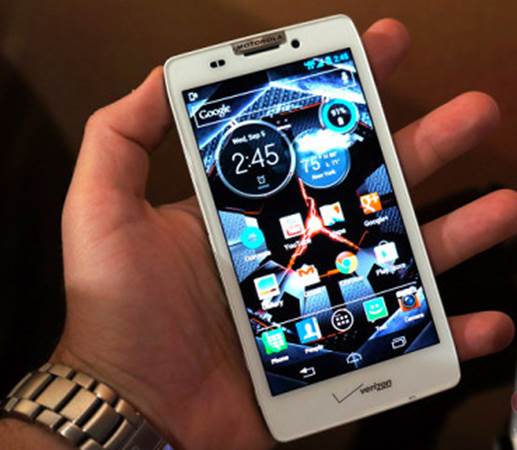
RAZR
HD’s 4.7-inch screen
One of the most welcome changes to the RAZR
line, of course, is the screen. Motorola has gone from a 4.3-inch panel to a
4.7-inch one and bumped up the resolution from qHD to a full 1,280 x 720,
without changing the handset’s size. Of course, being a version of Super AMOLED
HD, that means we’re still looking at a PenTile layout here. It’s not a bad
screen at all. Although it can’t compete with the stunning LCDs of the Optimus
G or the One X, it’s at least on par with the Galaxy Nexus. Colors are bright
and saturated while darker areas are deep and almost light absorbing – perhaps
unnaturally so. But jagged edges are hard to spot, viewing angles are extraordinary
and it shrugs off direct sunlight as a minor inconvenience. However, one of the
biggest surprises was the speakerphone, which was loud, clear and one of the
best we have ever heard in a long time. And you’ll be able to us that speaker
almost everywhere in the world since, in addition to the Verizon standard LTE
and CDMA radios, the RAZR HD and MAXX HD also support GSM 850/900/1,800/1,900
and HSPA on the same hands, plus 2,100 MHz.